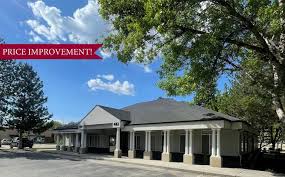Several months after fires tore through Pacific Palisades and Altadena, rent near burn areas is rising faster than elsewhere in Los Angeles County, according to an L.A. Times analysis of Zillow data.
In ZIP codes within three miles of the Palisades fire, rent increased 4.8% from December to April, according to the analysis. Within three miles of the Eaton fire that destroyed swaths of Altadena, rent jumped 5.2%.
In L.A. County ZIP codes farther than three miles of either burn area, the gain was smaller — 2.2%.
Rent could be rising for multiple reasons, experts said, but it’s likely climbing faster near the fires because thousands of homes were destroyed and displaced residents wanted to stay near where they had built their lives, in the process creating a surge of demand in an already drum-tight housing market.
“It doesn’t surprise me,” said Nicole Lambrou, an urban planning professor at Cal Poly Pomona. “You’re looking close to where you were because that’s your community.”
In the weeks after flames broke out, there were widespread reports of landlords illegally price gouging, even raising rent beyond 50%. But there’s been debate over how widespread and long-term the fire effects would be, leading to different responses from different government bodies.
The Los Angeles County Board of Supervisors in February passed eviction protections for many tenants economically affected by the fires, but the Los Angeles City Council declined to take similar measures amid concerns they would hurt landlords.
The Federal Emergency Management Agency hasn’t leased apartments for displaced residents like it has after similar disasters, saying data indicate there is enough housing available.
To conduct its analysis, The Times looked at Zillow rent data at the ZIP code level for single family houses, condos and apartments and compared average rent from December — the month before the fires — to April.
Because seasonal trends tend to push rent up during those months, The Times also compared the change to previous years and found rent grew more in the most recent period — both in areas near the fires, as well as those farther away.












